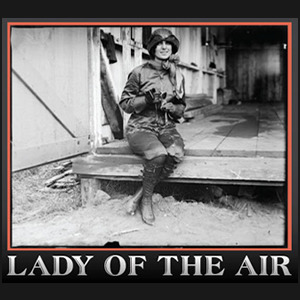TITLE: Lady Of The Air
WRITTEN BY: Sterling Brown
FORMAT: Screenplay or TV special / 100 pages
GENRE: Drama
SETTING: 1910 –12, New York, Boston, England, France
WRITERS GUILD WEST: # 2153593
LOG LINE:
In 1911, Harriet Quimby became the first female pilot. In 1912, she was the first female to fly over the English Channel. Knowing aeroplanes were dangerous, she wanted one more record flight…then she’d quit.
SYNOPSIS: It’s 1910, and the public is fascinated with aeroplanes. HARRIET QUIMBY, a writer for Leslie’s Weekly magazine, is covering the Belmont Park air race in Long Island, NY. With her is MATILDE MOISANT, sister of racer JOHN MOISANT, the first American to fly across the English Channel. While taking off for a race to the Statue of Liberty, John’s plane crashes. He jumps in another, takes off again, and wins. Though the judges disqualify him, the crowd drapes an American flag around his shoulders and carry him around the field.
Harriet is much impressed with John, and asks him to teach her to fly. Appalled that a woman would make such a request, he refuses. During the next few weeks she accompanies him when he races his plane (and loses) against a car. He then agrees to teach her. Before he can do so, however, he dies in a plane crash. A few months later, his brother Alfred opens a flying school in Long Island. Under the instruction of French pilot ANDRE HOUPERT, both Harriet and Matilde attend ground school, learn to “grass hop” in a short-winged monoplane, and take their initial solo flights. They befriend fellow student CHARLES WILLARD and his father, business executive WILLIAM WILLARD.
Finally, after three months of lessons, Harriet becomes the first licensed female flier in the United States. The second license is awarded to Matilde. Harriet has described her training in a series of articles for Leslie’s Weekly, increasing her national popularity. A daring woman during an era of female suppression, Harriet is her own wellpublicized yet mysterious creation. She wants great fame, but under her own terms. Consequently she lies, slicing a decade off her thirty-seven years and pretending to be the daughter of a wealthy family. Any trace of her life not fitting with her public image is hidden. Consequently only her mother, URSULA, with whom she lives in a New York City apartment, knows of her affair with John.
Flying becomes her passion. She and Matilde join Charles on the Moisant Flying Team, giving exhibitions and setting aeronautical records throughout the U.S. and Mexico.
Upon her return Harriet has something new to conceal: her romance with hot-air balloonist LEO STEVENS. He becomes her business agent, and suggests she boost her reputation by flying the Channel. In Paris they meet the first Channel flier, LOUIS BLERIOT. A manufacturer of monoplanes, Bleriot agrees to provide one for Harriet’s flight. While waiting to depart, she learns from her companion, actress LINDA GRIFFITH (wife of film director D.W. GRIFFITH) that Leo is married. The romance ends, but flight preparations continue. On April 16, 1912, Harriet leaves Dover England and flies across twenty-two miles of open water through blinding fog and sleet, reaching France in less than an hour. However, the sinking of the ocean liner Titanic the day before obscures all news of Harriet’s flight. She returns to America without fanfare. When women’s suffrage leader KATHARINE HEPBURN (mother of the future actress) asks her to promote their cause, Harriet declines. Although her determination and talent have enabled her to cover stories around the globe, write screenplays and act for Griffith, she is unable to involve herself in anything which won’t bolster her fame.
Harriet’s ambitions are more important to her than her life. After Leo arranges for her to fly at a Boston air show organized by William Willard, she agrees despite the warnings of Matilde (who has retired after surviving a series of crashes) and Houpert. She reconsiders, however, following an exhibition at the show when she almost loses control of her plane. She tells Linda she would like to quit, and asks her if D.W. will feature her in a film about flying. Linda reveals that she and D.W have separated. He blames Harriet for taking Linda to Europe for her Channel flight. Rather than return to the magazine and relative obscurity, Harriet prepares to attempt a speed record that evening. Placing William in the back seat of her Bleriot, she flies from Squantum Field to the harbor’s Boston Light. While returning, William stands to congratulate Harriet for evidently setting the record. He upsets the plane’s balance. It tilts, throwing Harriet and Willard to their deaths in the harbor’s shallow water.
Leo carries Harriet to shore. Charles and another man carry William. Ursula rushes to Harriet as she lies on the beach, crying out that this was the result of Harriet’s refusal to listen. That winter, at the Quimby apartment, it is announced that a monument is being erected at Harriet’s grave. The following spring, Ursula visits the cemetery. She looks up and imagines Harriet flying.
NOTE: A 28 minute biopic film of Harriet Quimby has been produced by Sterling Scripts.

